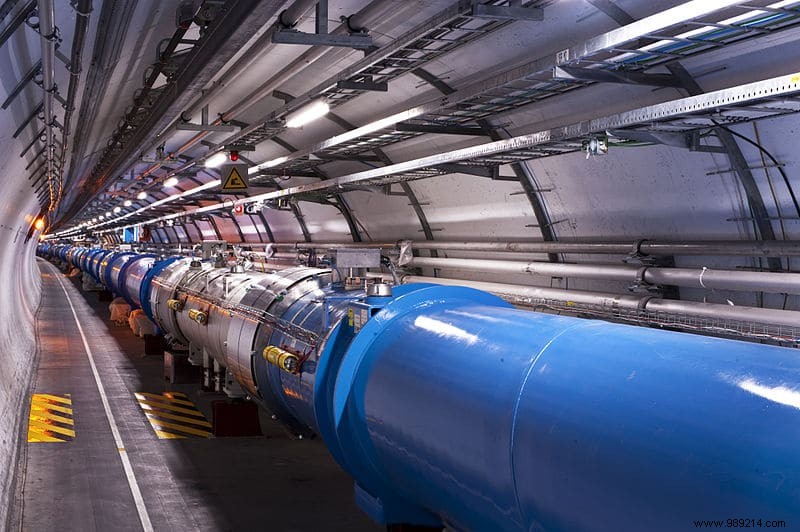An international team of physicists has just made the first-ever detection of candidate neutrinos produced by CERN's Large Hadron Collider (LHC). In an article published in the journal Physical Review D, the researchers describe how they observed six interactions in a pilot test conducted in 2018.
Neutrinos are elementary particles 100,000 times smaller than an electron , whose mass is virtually zero. Produced in stars, supernovae or quasars, they very rarely interact with matter, which makes them difficult to detect. For this reason, neutrinos are often described as "ghost particles". They are however abundant. Keep in mind that billions of them pass through your body every second .
In recent years, scientists have developed several facilities capable of recording traces of their passage. These structures, ultra-sensitive light detectors called photomultipliers, are most often immersed in pure water. The idea is then to detect the faint flashes (Cherenkov light) emitted when a neutrino collides with an atom contained in water.
Piloted by the Americans and buried in the Antarctic ice near the South Pole Station, IceCube is to date the largest neutrino detector in the world. There are also some in Japan or at the bottom of Lake Baikal, in Russia.
It has long been thought that particle accelerators, such as the Large Hadron Collider (LHC), in the border region between France and Switzerland, could produce them and then detect, but it was still necessary to have the right instruments. It is now done.
During a pilot test of an experiment called FASER, installed in 2018, scientists detected six neutrino interactions .
“Before this project, no sign of neutrinos had ever been observed in a particle collider “confirms Jonathan Feng, co-author of a study describing the results. “This significant breakthrough is a step towards developing a deeper understanding of these elusive particles and the role they play in the universe “.
Located 480 meters downstream from where the particle collisions occur, the FASER instrument consists of lead and tungsten plates separated by layers of emulsion. Some of the neutrinos will then strike the nuclei of the atoms in these metals, releasing other particles which will pass through these layers and leave visible traces. Six of these marks have therefore been recently spotted.

Building on this success, the FASER team, made up of 76 physicists from 21 institutions in nine countries, is preparing a new series of experiments with a much larger and much more sensitive named FASERnu. The latter will weigh more than 1,090 kg against only 29 kg for the pilot instrument . Its increased sensitivity will allow it to detect more neutrinos, and more often.
“Given the power of our new detector and its prime location at CERN, we expect to be able to record over 10,000 neutrino interactions in the next LHC cycle, starting in 2022 “, underlines David Casper, co-author of the study. “We will detect the most energetic neutrinos that have ever been produced from an artificial source “.
Ultimately, understanding these "ghost particles" could provide answers to some great puzzles of physics, such as the question of why the Universe is made only matter and not antimatter.